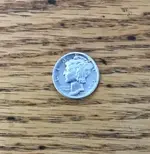I am running zero discrimination in full tones. Every once in a while I need to bump it up to one or two in order to eliminate chatter, but that doesn’t happen all that often.
The reason I ask is that I used to be a big full tones, zero disc proponent. I still have that programmed into my remote because it works fine. But I have really moved on from full tones and use it very rarely - perhaps coin shooting at clean (no iron) sites, but mainly use 5 tones or pitch now. The reason being that I mainly hunt at sites that do have lots of iron or iron trash (because those are the sites that still have the keepers) and I need to be able to both hear the iron AND not have it affect the non-ferrous target IDs (ferrous can down and even up average non-ferrous target IDs) and target IDs in general are unstable in the presence of thick iron which makes full tones sound nuts. That is where discrimination and iron volume comes in. I typically run pitch in super thick iron or 5 tones in moderate iron, with disc set at around 7.5 and iron volume at 2 or 3.
I think there are a lot of myths about using discrimination with the Deus that have cropped up over the years (like disc affecting depth). The following is more about putting to bed those myths and providing awareness about some of the advantages of using disc rather than trying to steer folks away from full tones or steering you towards discrimination-based programs. If something is working for you, then stick with it. This is not directed at secondstar specifically (you may already know all this), but just some info to anyone running 0 disc as food for thought...
Why not just run 0 disc if I am hearing the iron anyway?
Running with disc does three things for you: (1) it helps prevent ferrous up/down averaging as previously mentioned and ground chatter; (2) it enables proper, stable operation of the horseshoe depth and ferrous indicator display which becomes unreluable at disc < 6, and (3) enables you to run with the lower tone bin in multi tone mode. If you run 0 disc in multi-tones, like in some of Gary's programs, you effectively turn 5, 4, and 3 tone programs into 4, 3, and 2 tone programs.
Why not run disc with full tones? You cannot run disc and still have iron volume in full tones. It is an all or nothing proposition. You can either chose to hear the iron at 0 disc or silence below the disc setting.
Don't you lose depth with disc? Not if it is set at 10 or less and even at settings above 15, the depth loss is not significant depending on soil type.
Don't high conductors sound better in full tones than multitones? They do at the default multitone high bin tone frequency. To make silver stand out, I crank the high bin frequency setting to it's max setting of 993 Hz (and the low (ferrous) bin to 120 hz).
Finally, if you do not want to hear the iron at all just use iron volume 0 with disc or full tones with disc (the iron volume setting has no effect in full tones).





